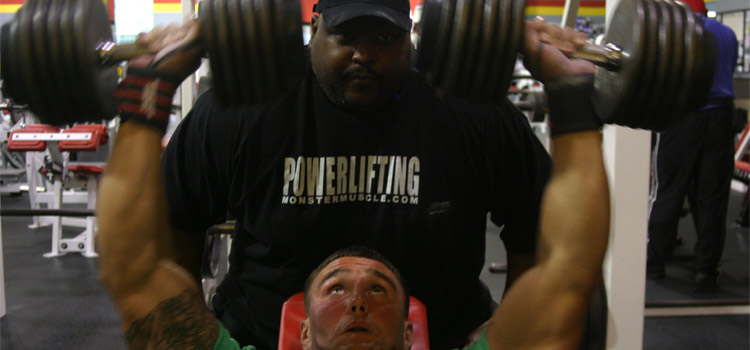Are you burning fat or are you storing fat? We’re all learning our metabolism can be complicated. Doing lots and lots of cardio isn’t the best way to ramp up that calorie burn. To reset a damaged metabolism, you have to adopt a different form of exercise. Bodybuilding training is a superior form of exercise for course-correcting metabolic function.
A Metabolic Train Wreck
Bad diet plans can create hormonal obstruction and dysfunction. This is typically caused by eating too few calories for too long, but it can also be caused by the typical junk food diet.
This can wreck your metabolism. Here’s why and how to fix it.
Why You Can’t Out-Exercise a Bad Diet

Remember that metabolic, hormonal, and internal biochemical environments – the big three of weight control – are meant to work in harmony with each other. When one of these is thrown out of whack, the other two usually follow suit. Basically, fat loss comes to halt, even if you clearly have more to lose.
Panicked about this, most people attempt to turn up the exercise part of the equation. They try to out-train their eating habits.
Unfortunately, when someone’s trying to shed pounds permanently, more exercise isn’t better after a certain point. It doesn’t “reset” the system. In fact, when overweight people do more exercise, it can just make them tired without having any positive effects on hormones or metabolism.
Furthermore, adding more exercise can do more harm than good in these folks. High doses of exercise can trigger compensation which off-sets weight loss.
Compensation and Fat Hoarding

Exercising more triggers defense mechanisms in the body in terms of hormonal and biochemical adaptations. Adding tons of extra exercise causes the body to respond a lot like it would when calorie restriction goes on for too long.
The body goes into “fat hoarding mode.” With cardio addicts, this can lead to more lean tissue (muscle) being surrendered for energy, leading to less overall calorie burning at rest.
On top of these compensations and adaptations, the risk of overuse injuries (tendonitis for example) increases. Add in a higher risk of burnout and training apathy and you can see the problem: you’re exercising more and more to lose fat, no fat loss is occurring, and the nagging injuries are adding up.
The Calorie-Burning Focus of Exercise is Faulty

Cruelly, this phenomenon is even more pronounced in overweight people. Instead of focusing on calorie-burning exercises, the focus needs to be on setting metabolic and hormonal systems back in sync with each other.
When it comes to course-correcting metabolism, the type of exercise matters. For overweight people who think cardio is the answer, consider the experience of veteran marathon runner, Kim Raine, who ran 18 marathons and found herself 18 pounds heavier afterwards.
And this isn’t an isolated incident. It’s very common among females. A damaged metabolism will not be “set right” by adding more aerobic work. The aerobic energy system doesn’t seem to play a role in course-correcting metabolic and hormonal function.
Furthermore, training to lose weight while trying to fix metabolic and hormonal function is another delusion. Weight loss can’t be the goal while working on correcting metabolism and hormonal systems.
Now, if someone isn’t just overweight but obese, then plain old walking is a viable exercise choice to begin the process of resetting the metabolism and hormonal systems.
But for those who are, say, 30-60 pounds overweight, or people who have gained weight as a consequence of deprivation dieting, then walking, jogging, running, etc. isn’t going to do much of anything for fat burning and leanness over the long-term.
To reset your metabolism and hormones, they’ll need to adopt a different form of exercise.
A New Fat-Burning Path

The simple message here is to “cardio less” and “lift more.” But what type of weight training works best for hitting the metabolic and hormonal reset button? For all the bashing traditional bodybuilding training takes, it’s still the superior form of exercise in course-correcting metabolic and hormonal function.
In fact, whole-body or body-part weight training done in complexes from supersets to tri-sets (strength-density training) is an even better approach. Instead of focusing strictly on load (the weight on the bar), realize the benefits of rep-centric training: 15-20 reps per set with low-rep strength sets sprinkled in.
People suffering with these issues don’t need to be caught up in low-rep strength protocols, or worse, a training style that exacerbates the problem by continually training them to exhaustion Effective workouts don’t have to be all-out efforts. Breathing should be labored but not to the point of panting. This will ensure adequate intra-workout recovery and thus lends to inter-workout recovery as well.
When it comes to resting within your workout, don’t time it. External measuring is nonsense. Recovery between sets should be determined by your answer to this question: “Am I ready to do the next set with equal or greater intensity?”
The Bottom Line
If you’ve damaged your metabolic and hormonal regulating system because of dieting, you have to accept that your body didn’t do this to you, you did this to your body. And you can fix it.













